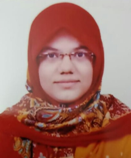AYURVEDIC APPROACH IN THE MANAGEMENT OF CEREBRAL PALSY- A CASE STUDY
Keywords:
Cerebral Palsy, Panchakarma, Pratimarsha Nasya, Yoga Basti.Abstract
Cerebral Palsy is the most common form of childhood disability. It is a group of non progressive, non contagious condition that causes motor impairment syndrome characterized by abnormalities of movement, muscle control, muscle co-ordination, muscle tone, reflex, posture and balance. It arises from an injury to the brain or abnormal development during the brain’s formation.
Ayurveda mentioned two main therapeutic measures i.e. Shodhana and Shamana. Panchakarma (Shodhana Chikitsa) is the best available treatment for the removal of disease from its root and also for better outcome. In this present study, child suffering from Spastic Hemiplegic type of CP treated by Panchakarma (Shodhana) as well as Shamana Chikitsa. 80 days of treatment protocol includes 3 course of Panchakarma therapy at the interval of 10 days along with internal medication (Medhya Churna). Each course includes 5 days Udavartana, 7 days Sarvanga Abhyanga (Bala Taila) and Nadi Swedana along with Pratimarsha Nasya (Panchabhautika taila) and Yoga Basti.
The result showed reduced spasticity of right upper and lower limbs, proper neck holding achieved, child started sitting without support, standing and walking with support as well as general health condition improved.
Downloads

Downloads
Published
Issue
Section
License

This work is licensed under a Creative Commons Attribution-NonCommercial-ShareAlike 4.0 International License.


